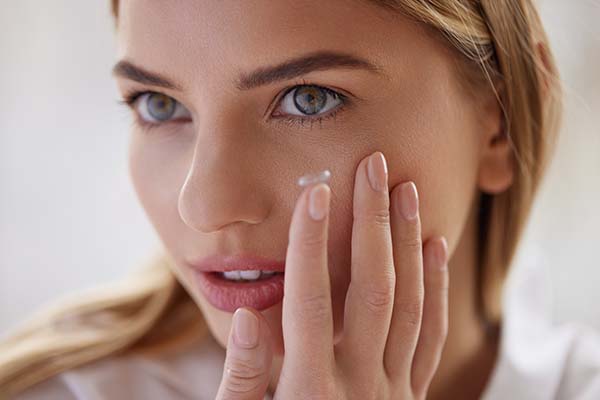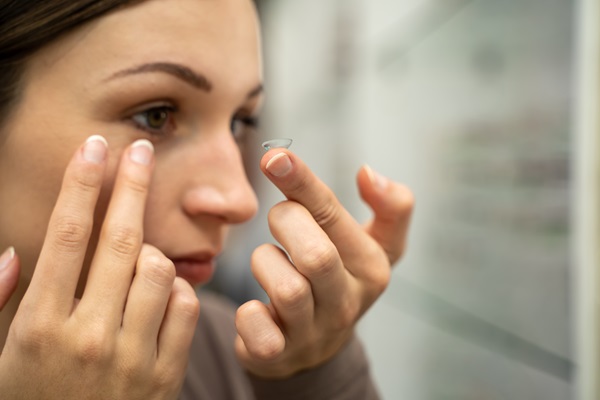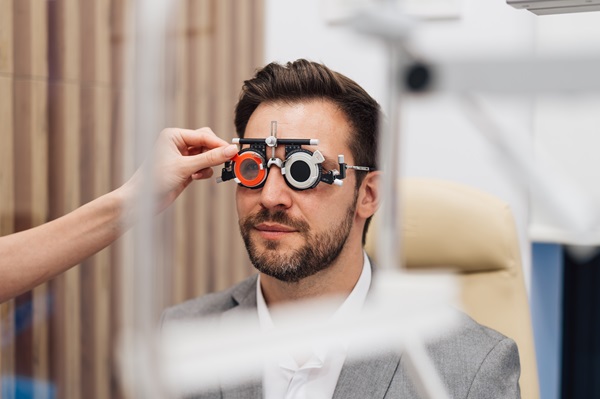Does an Optometrist Fit People With Both Glasses and Contact Lenses?

For an assortment of vision problems, your optometrist can be a helpful resource to find relief. If you have noticed you cannot see as well as you used to, you may need corrective lenses. Whether you feel glasses or contact lenses make the most sense for you, a visit to this professional is the right step to take. You do not have to struggle with your eyes any longer.
Issues an optometrist can evaluate and repair
Like any other part of the body, the eyes can develop conditions and dysfunctions. Some problems begin at birth, while others show up during childhood or adolescence. Optical abnormalities can manifest when a person becomes an adult too. The optometrist has the knowledge and training to diagnose why people’s vision has become impaired. This person can treat conditions such as nearsightedness, farsightedness, blurred vision, double vision, loss of vision, and other concerns. This professional can also prescribe treatment for itchy eyes and eye infections.
Taking care of the problem
The optometrist offers flexibility for patients who have any of these conditions. Both eyeglasses and contact lenses are options to improve vision. To determine the person’s prescription, the doctor will conduct an eye examination. The optometrist may recommend one or the other based on the person’s preferences or needs. The patient will return to the office at least once a year for an exam. This helps the doctor evaluate whether to change the prescription.
Benefits of eyeglasses
The optometrist will discuss with the patient the advantages of each option to correct vision. Glasses will not cost as much for the patient in the long term because they will not need to replace them as often. Plus, there is much less maintenance and cleaning required for the person to wear glasses. Glasses can also protect the patient’s eyes from dust, dirt, and other debris. Also, if the person has the habit of touching their eyes, glasses could be a deterrent.
Optional features and add-ons
Advances in technology have enabled eyeglasses to have more features. This has made many people feel better about the eyewear. Vision is now healthier and less worrisome than before. Below are some of the latest features and add-ons a pair of eyeglasses can now have:
- Hydrophobic coating is a high-quality surface layer that makes the lenses waterproof. It keeps the lenses clear and clean in muddy and rainy conditions. One can add this feature to regular eyeglasses. The coating sticks to the glass to form a shield against dirt, dust, and water.
- Polycarbonate lenses are impact-resistant and lightweight. These lenses can block 100% of ultraviolet rays. This removes the need for a UV coating.
- Anti-reflective coating is a common add-on to the back of most prescription glasses. It prevents reflections and glare. It also lets more light enter the lens.
- Photochromic lenses are also known as transition lenses. These lenses darken when the wearer is outdoors and exposed to UV light. It then clears up when the wearer is indoors.
- Polarized lenses are for outdoor activities. These lenses reduce glare, protect the eyes from UV rays, and provide high-contrast vision.
Benefit of contacts
Patients who play sports or are involved in other activities have less of a chance of breaking contacts than glasses. Glasses can sometimes make a person feel self-conscious, but contacts are invisible. The person will not have to worry about matching frame colors or styles with their clothing. There are also fewer vision distortions or obstructions with contacts.
Contact lens features
Contact lenses can also have more features and add-ons. People often use colored contacts to change the colors of their eyes. Manufacturers add pigments to the contacts to make this happen. Other contact lens features are the following:
- Protect the eyes from UV rays
- Keep eyes comfortable and moist
- Let oxygen pass into the eyes
- Create less rubbing between the surface of the eye and the eyelid
When the optometrist fits the patient with corrective lenses
Babies as young as 6 months old should have an eye exam. After this appointment, the child should return around age 3. Then again as they start school at age 5 or 6. The optometrist may prescribe glasses or contacts at these early ages if necessary.
A helping hand for your eyes
Vision changes can affect you at any age. Luckily, you can turn to your optometrist for assistance. Look at the advantages and challenges of wearing eyeglasses and contacts. Talk to the optometrist about which one is right for you and your lifestyle. Make an appointment for an exam today so you can start seeing clearly again.
Get more information about Texas Optical in Dallas at https://www.texasoptical.net.
Check out what others are saying about our services on Yelp: Optometrist in Dallas, TX.
Recent Posts
A contact lens exam is slightly different from an eyeglass prescription exam. Though both correctives are great for helping you see clearly, contact lenses can be a better fit for certain individuals, such as those who live more active lifestyles. Take a closer look at what you can expect during your upcoming examination.A general eye…
Regular eye exams are crucial for maintaining overall health for people of all ages. By establishing a relationship with an optometrist, you not only protect and enhance your vision but also safeguard against potential health issues. This comprehensive guide highlights the benefits of maintaining a connection with our office, a practice that benefits everyone in…
Your eye health is an essential part of your overall health. Regular checkups with an eye doctor can often prevent many eye issues and complications, catching them in their early stages. Here are three key signs that it might be time to visit an eye doctor.Eye discomfort can appear in many ways. While occasional eye…
Proper vision care can address eye strain and reduce its uncomfortable symptoms. An optometrist will also help to prevent future eye strain. Thus, while there are many ways to strain your eyes, there are many changes you can make to give them a break.Straining the eyes can bring all sorts of symptoms. As a result,…


